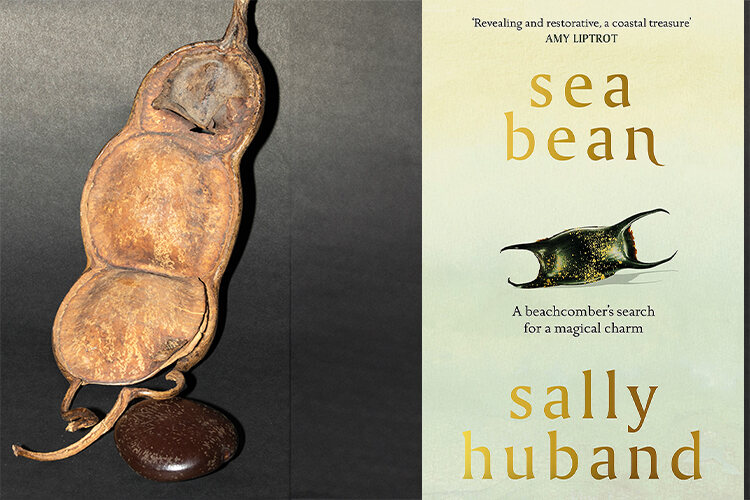
In this bright and blustering book, Sally Huband reminds us of the wonder of the sea and her quest to find a ‘magic’ sea bean
Review by Olivia Edward
The eponymous sea beans are tropical seeds that make their way from the Americas across the Atlantic Ocean to the coasts of Europe. They travel on currents such as the Gulf Stream and bob past cetaceans, turtles and young eels out in the Sargasso Sea.
No-one is sure how long they take to make their journeys. Messages in bottles have been recorded as taking around 14 months to travel from the West Indies to European shores, but lab experiments have shown that seeds may be able to stay afloat for up to 19 years – something to do with their hard, durable outer coatings, which confer both protection and buoyancy.
Viability is another matter. A sea bean that rattles is unlikely to produce a plant of any description, but either way, the decision to grow one will be fatal – if it sprouts, it will either morph into a weak death-bound seedling or it will become a tropical plant requiring a greenhouse-like environment to maintain the conditions it needs to flourish. Every which way, the sea bean is lost. So, instead, they’ve found better purpose as magical talismans, used to ward off evil spirits, or to bring their bearers good luck.
Sally Huband began searching for one when she moved to the Shetland Islands a few years ago with her husband and young son. Beachcombing gave her a sanctuary from chronic illness and provided a way into the archipelago – ‘a tight and ragged cluster of islands surrounded by a vast expanse of dark blue’ out between Norway, the Faroe Islands and Scotland.
The descriptions of her finds – a lobster pot label from Canada, cigarette lighters from Greenland – create a sense of geographical proximities, and a reminder of the ‘wheres’ that might have seemed much closer together in more maritime eras than they do now, when air and road travel are the predominant forms of transport.
Together with her astute take on witchcraft and patriarchal cultures, it makes for a bright gale of a book – blustery and edifying, and more than worth taking a walk through a Scottish storm for.




